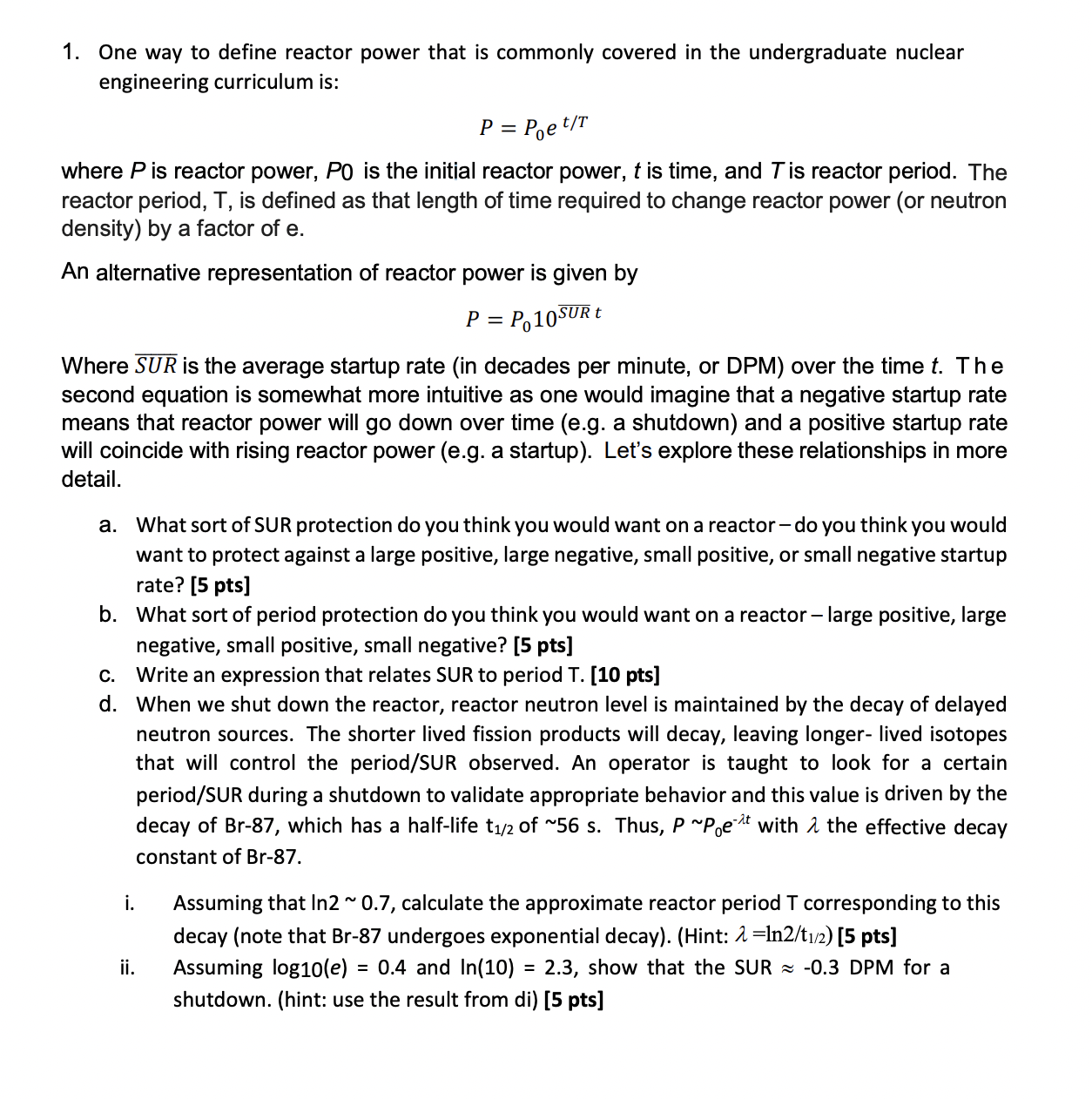Answered step by step
Verified Expert Solution
Question
1 Approved Answer
One way to define reactor power that is commonly covered in the undergraduate nuclear engineering curriculum is: P = P 0 e t T where
One way to define reactor power that is commonly covered in the undergraduate nuclear
engineering curriculum is:
where is reactor power, is the initial reactor power, is time, and is reactor period. The
reactor period, is defined as that length of time required to change reactor power or neutron
density by a factor of
An alternative representation of reactor power is given by
Where is the average startup rate in decades per minute, or DPM over the time The
second equation is somewhat more intuitive as one would imagine that a negative startup rate
means that reactor power will go down over time eg a shutdown and a positive startup rate
will coincide with rising reactor power eg a startup Let's explore these relationships in more
detail.
a What sort of SUR protection do you think you would want on a reactor do you think you would
want to protect against a large positive, large negative, small positive, or small negative startup
rate? pts
b What sort of period protection do you think you would want on a reactor large positive, large
negative, small positive, small negative? pts
c Write an expression that relates SUR to period T pts
d When we shut down the reactor, reactor neutron level is maintained by the decay of delayed
neutron sources. The shorter lived fission products will decay, leaving longer lived isotopes
that will control the periodSUR observed. An operator is taught to look for a certain
periodSUR during a shutdown to validate appropriate behavior and this value is driven by the
decay of which has a halflife of Thus, with the effective decay
constant of
i Assuming that calculate the approximate reactor period corresponding to this
decay note that undergoes exponential decayHint: pts
ii Assuming and show that the SUR ~~ DPM for a
shutdown. hint: use the result from di pts

Step by Step Solution
There are 3 Steps involved in it
Step: 1

Get Instant Access to Expert-Tailored Solutions
See step-by-step solutions with expert insights and AI powered tools for academic success
Step: 2

Step: 3

Ace Your Homework with AI
Get the answers you need in no time with our AI-driven, step-by-step assistance
Get Started


